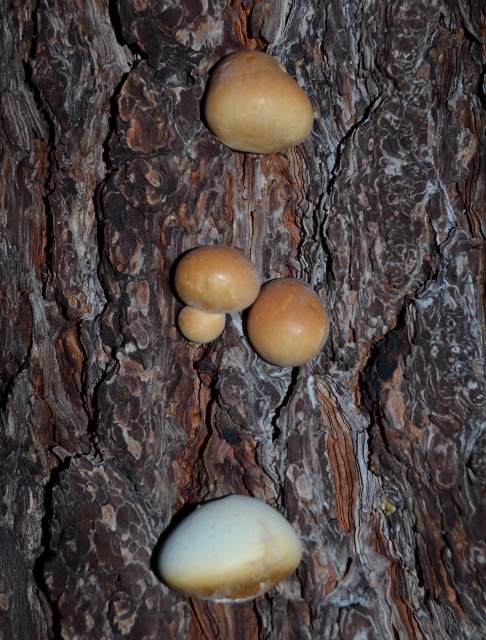saveourplanetearth.com
Call us: (775) 831-1331
The Magic of Mushrooms
Taking a walk after a good rainstorm is one of my favorite things. Not only do the trees, the ground, the foliage and the air look and smell fresh, often interesting things have begun to grow. For example, mushrooms have sprung up seemingly overnight.
Actually, the real work of mushroom creation takes place underground, unseen, making it seem like it has magically appeared overnight.
The mushroom is the fruit of a fungus that has become colonized in the ground, within tree bark, on fallen logs – just about anywhere that is porous enough to allow the fungus to grow.
The fungus can create an enormous colony underground or within a solid organic object. This colony is known as mycelium. The mycelium is the vegetative part of the fungus and consists of a mass of branching, thread-like hyphae.
Through the mycelium, the fungus absorbs nutrients from its environment in a two-stage process. First, the hyphae secrete enzymes into the food source, breaking the biomolecules into smaller units which are then absorbed into the mycelium.
Chemically, the way mycelium lives and reproduces is opposite of plants using photosynthesis. Mushrooms take in carbon and consume oxygen, while plants consume carbon dioxide, creating carbon and oxygen.
The fungal life cycle has the beneficial effect of decomposing plant material. These fungi are an important part of the decomposition process and make it possible for this and other natural biological systems to function.
Now that the mycelium is established, the mushroom can form on the surface when the ground receives moisture. The mushroom initially forms a minute fruiting body, known as the pin stage. Once it grows to button stage, it can draw water from the mycelium and rapidly expand by inflating preformed cells that took several days to form in the primordia, which is the earliest recognizable stage of development.
The fruiting bodies are short-lived and will dry up quickly in the heat of the day but the mycelium can be massive and hundreds or thousands of years old.
The cap of the mushroom connects to the stem by a series of radiating gills, which also contain spores, a method by which the colony can reproduce. One mushroom contains a billion or more spores that, when released, can be carried on the wind or by birds or insects to other areas of the forest to begin a new colony.
Mushrooms are generally found in the produce section at grocery stores with the vegetables, when actually they are a fruit — the fruit of a fungus. Vegetables require sunlight for growth, as do fruits, but not the mushroom. The mushroom grows in the shade.
Mushroom farmers plant spores in the soil, a process called “inoculation”, which take about two weeks to colonize and reach the surface. The mushrooms are grown in flats, layers high and have to be hand-picked and trimmed.
Mushrooms are about 92% water but also contain useful nutrients. For example, one portabella mushroom has more potassium than a banana. Mushrooms are an excellent source of B vitamins, such as riboflavin and niacin; they also offer the essential minerals selenium and copper. To add to their culinary achievement, they are low in fat, carbohydrates and calories with zero sodium.
Mushroom farmers don’t need to have all the fun — you can grow your own mushrooms in your basement, perhaps by utilizing one of a variety of mushroom growing kits.
Don’t expect mushrooms overnight – it will take time to set up your growing operation and prepare to wait weeks or months before the growing substrate is completely colonized. This is a project for someone who really likes to grow things and/or who really loves mushrooms.
Though mushrooms won’t grow in direct sunlight, the substrate in which they grow will require some ambient light to “pin”, as it is called. Pinning is the initial dot that appears on the soil. Once the growing medium is fully colonized, and the initial growth appears as a pin, then as a “button”, the mushroom will double in size every 24 hours. At last you will reap the reward of your efforts.
Fungi Fun Facts
• The study of fungi is called mycology
The study of fungi is called mycology
• Fungi recycle plants after they die and transform them into rich soil – if not for fungi, the Earth would be buried in several feet of debris and life on the planet would soon disappear
Fungi recycle plants after they die and transform them into rich soil – if not for fungi, the Earth would be buried in several feet of debris and life on the planet would soon disappear
• Some of the oldest living mushroom colonies are fairy rings growing around the famous Stonehenge ruins in England
Some of the oldest living mushroom colonies are fairy rings growing around the famous Stonehenge ruins in England
• Create your own dyes by boiling wild mushrooms
Create your own dyes by boiling wild mushrooms
• The spores of mushrooms are made of chitin, a long-chain polymer that acts like a natural plastic
The spores of mushrooms are made of chitin, a long-chain polymer that acts like a natural plastic
• Under the right conditions, some mushrooms' spores can sit dormant for decades or even a century, and still grow
Under the right conditions, some mushrooms' spores can sit dormant for decades or even a century, and still grow
Learn more about growing your own mushrooms on fungi.com.
Mushrooms growing on tree bark after a rainstorm.



